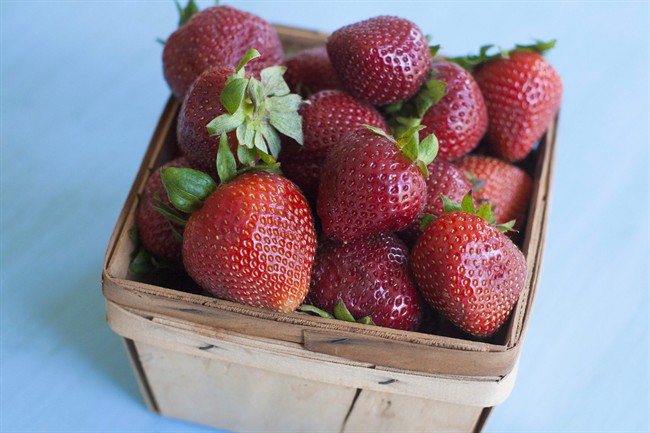TORONTO – Fruits of the season are ripe for the picking, but how can you tell if they have reached their sweet spot?

Every fruit matures differently, meaning there’s no universal way to interpret colour, firmness or fragrance. Still, there are certain tips that can help grocery shoppers bring home the best of summer’s bounty.
Watermelon has one obvious sign indicating it’s ready to eat — a “yellow belly.” The National Watermelon Promotion Board says that’s the creamy-coloured spot you should find on its underside, proving it’s fully ripened in the sun.
The board suggests seeking a symmetrical melon without bruises or dents. Unfortunately, there’s no way to tell if a watermelon has gone off other than slicing it open. The texture will be mushier than what you expect — that doesn’t mean it’s not safe for consumption, but it’s on its way out.
Like watermelon, berries are also harvested when ripe. This makes them non-climacteric fruit — unable to ripen off the vine, unlike climacteric fruit such as bananas, which can ripen after being harvested.
A ripe berry is easy to spot.
“Colour is the main indicator,” said Kevin Schooley from the Ontario Berry Growers Association in a phone interview from Kemptville, Ont.
- Gas prices in Ontario, Quebec to jump to highest level in 2 years: analyst
- Shoppers faces proposed class action over claims company is ‘abusive’ to pharmacists
- ‘Bacterial vampirism’: Deadly pathogens attracted to human blood, study finds
- What’s going on with the Cybertruck? Tesla seems to have halted deliveries
Strawberries and raspberries should be evenly bright red but their fragile nature means you will still see patchy berries in grocery stores. Strawberries in particular don’t always get the chance to fully ripen since they are sometimes shipped a little immature to travel better, said Schooley.
Blueberries are hardier, but it’s trickier to know when they’ve reached their peak. Even after turning blue, they can take three or four more days to reach their full sweetness on the vine.
Gooseberries should be a shade of yellow depending on the variety, but since there isn’t as dramatic colour change as other berries, there’s only one way to be certain.
“With any berries, you always want to taste to make sure,” said Schooley. He encourages going out to taste raspberries and blueberries that are in season now, especially because it’s been an “above average” season.
Another popular fruit in season, cherries, are also non-climacteric. They are picked ready to eat but a deeper red doesn’t necessarily mean more flavour.
“Colour isn’t critical on cherries,” said Glen Lucas from the B.C. Fruit Growers’ Association in Kelowna, B.C. which has over 550 tree fruit farms as members.
Instead look for cherries that are firm, said Lucas.
Apricots and peaches might seem too firm at the grocery store but this shouldn’t be cause for alarm since they are climacteric fruit.
“They are picked a little underripe and have to mature,” Lucas said.
He suggests giving them a few days at room temperature to soften up.
The most important thing to keep in mind in the grocery store is to avoid fruits that look too ripe.
“Physically, you’ll be able to tell that the fruit is bruised or deteriorating,” said Lucas.

Comments